Karl Wolff
White Lie by Jeanne D'Aout, scene with Otto
“The nightmare was complete when I couldn’t even prove I was a pure blood Aryan, because when I researched my genealogy, I realised my mother and maternal grandfather were Jewish. And I must admit, I was a trouble-maker, I got into fights a lot when I saw SS soldiers misbehave and I wanted to make a career, to move further up the ladder. I was attracted by the power of my superiors, like many others, and in this process I gained a few political enemies. This is how my reputation attracted Hitler’s attention. He demanded my presence at the Berghof, Hitler’s base near Bergtesgaden on the German-Austrian border. I can still remember him, sitting behind his desk, wearing his reading glasses while reading my file. I had never seen him with reading glasses before. While Hitler was reading my file I waited for his reaction. My legs nearly gave way. Then he gave me my new orders, which said that I was drafted to be trained as a soldier, “to make a man out of me”, he said, so I took the journey to Buchenwald…”
Otto started to tremble again.
Otto Rahn y la Búsqueda Nazi por el Secreto de los Cátaros
La Berlin de entreguerras era una ciudad conocida en toda Europa por su sub-cultura bohemia y sus jovenes intelectuales. Entre los personajes que ardientemente celebraban los abundantes «ismos» que estaban fracturando las viejas certezas ideologicas, las cuales habian compactado el siglo XIX, pocos individuos eran mas coloridos que un joven de ojos verdes y cabellos oscuros llamado Otto Rahn. Su figura delgada, envuelta en un caracteristico abrigo negro y sombrero tiroles, arrojaba una larga sombra desde esos anos sombrios, una «gran silueta» alrededor de la cual se han acumulado los mitos mas extravagantes. El fue considerado igualmente como mason, rosacruz, luciferino, y un agente de la Sociedad Thule. Como lo plantea el autor Phillip Kerr, los contemporaneos de Rahn no se habrian sorprendido de ver «la Dama Escarlata y la Gran Bestia salir volando desde la puerta del frente» de su apartamento en Tiergartenstrasse. Uno de sus companeros de la Orden Negra de Heinrich Himmler comento en un memorandum interno que el «medio sospechaba que Rahn tenia relaciones con el pueblo pequeno».
В поисках утраченного Грааля
Берлин между мировыми войнами был городом, известным по всей Европе своей богемной субкультурой молодых интеллектуалов. Среди лиц, которые горячо обсуждали много модернистских "измов", которые ломали старые идеологические определения, что склеивали 19-ое столетие, немногие были более колоритными, чем этот темноволосый, зеленоглазый молодой человек по имени Отто Вильгельм Ран. Его худая фигура, одетая в характерный черный плащ и фетровую шляпу, бросает длинную тень из тех сумеречных лет, ‘великий силуэт’, вокруг которого вращались самые невероятные мифы. Он, как говорили, был Масоном, Розенкрейцером, Люциферианцем, посланцем Общества Туле, посвященным Катаром и даже руководителем некоего неизвестного международного тайного общества.
Lachrymae, Chapter IV: The Final Chapter
An Online Journal by Richard Stanley<
(Originally appeared in R. S.' MySpace<, December 9th, 2007.)
Brethren, I have invited you here to this ancient, invisible theatre with the intention of not only unmasking the killer God responsible for these crimes against 'reality', but more cogently, to provide an unambiguous solution to two or perhaps three long running esoteric enigmas!
I salute those who have stayed with the program from the top. For late joiners I include an index to conjure order out of the scrolling chaos and serve as an aid memoir for those hardy few who dare read further. I have very little keyboard time at present and less in the months to come. Until we meet again this strange saga is my gift to you.
Be warned the completed text contains 'spoilers' and may be hazardous to your belief systems.
Otto Rahn Obituary in Völkische Beobachter 18-5-1939
German:
Bei einem Schneesturm in den Bergen kam im März d.J. der SS-Obersturmführer Otto Rahn auf tragische Weise ums Leben. Wir betrauern in diesem toten Kameraden einen anständigen SS-Mann und den Schöpfer ausgezeichneter, geschichtlich-wissenschaftlicher Werke.
Der Chef des Pers.-Stabes RF SS
Gruppenführer SS Wolff.
English:
SS - Obersturmführer OTTO RAHN died tragically in March of this year in a snow storm in the mountains. We mourn the loss of our comrade, decent SS-man and creator of outstanding historical-scholarly works.
SS Chief of Staff, Gruppenfuhrer Wolff.
Russian:
Во время снежной бури в горах в марте этого года трагически погиб оберштурмфюрер СС Отто Ран. Мы скорбим о потере нашего товарища, добропорядочного эсэсовца и создателя выдающихся научно-исторических работ.
Начальник штаба СС, группенфюрер CC Вольф.
Il neopaganesimo di Otto Rahn
Il caso di Otto Rahn è ormai noto: è la storia di un giovane romantico, che insegue un sogno. Un giorno entra in contatto con un potere sensibile al mito – il Terzo Reich -, che lo lancia e lo valorizza: ciò che presto lo porta a credersi una specie di nuovo cavaliere templare. Il mito del Graal, quello di una società di puri e di idealisti, di un regno dello spirito, popolava il suo immaginario. Certo del legame storico tra l’eresia dei Catari e la poesia dei trovatori medievali, l’una è l’altra viste come sopravvivenza pagana sotto la scorza del cristianesimo ufficiale, Rahn si convinse che il fulcro di questa cultura si fosse trovato un tempo nel castello provenzale di Montségur, alle pendici dei Pirenei. Proprio il luogo dove, nel 1244, avvenne il finale sterminio dei Catari da parte della Chiesa. In questa zona, intorno al 1929, Rahn svolse ricerce, percorse grotte e camminamenti, rintracciò graffiti e interpretò simboli arcani. Alla fine raccolse il tutto e scrisse il celebre libro Crociata contro il Graal, pubblicato nel 1933. L’incontro fatale con Himmler, anch’egli interessato alla storia delle eresie e all’universo dei simboli pre-cristiani, il pronto arruolamento e la rapida ascesa nelle SS, portarono però Rahn a inciampare nel suo piccolo-grande segreto. Sembra infatti che una mal vissuta omosessualità sia stata all’origine delle sue dimissioni dall’Ordine Nero nel 1938 e infine del suo suicidio, avvenuto per congelamento tra le montagne del Tirolo, nel marzo del 1939. Rahn rimase vittima di un trauma, per esser stato coinvolto in un piccolo scandalo omoerotico? Non resse il clima ideologico delle SS? Venne forse spinto a quel gesto? O ci arrivò da solo, per evitare l’isolamento sociale e magari la persecuzione?
Le Mystère Otto Rahn - Du catharisme au nazisme (Le Graal et Montségur), août 1978, Christian Bernadac
Christian Bernadac, avançant de "coïncidences en coïncidences" propose une solution au "Mystère Otto Rahn". Otto Rahn serait devenu Rudolf Rahn, collaborateur d'Abetz à Paris avant de terminer la guerre Ambassadeur du Reich à Rome, alors que le chef militaire en Italie était ce même Karl Wolff qu'il aurait connu à Ussat-les-Bains avant de le retrouver à l'état-major privé d'Himmler. Oui! Aucun romancier n'aurait pu imaginer un tel destin.
Le "Mystère Otto Rahn" est un livre que ne ressemble à aucun autre; si l'enquête occupe le corps principal de l'ouvrage. Christian Bernadac profite "des jours et des lieux" pour "débarbouiller" le catharisme des mensonges, des invraisemblances, des détournements, des mystifications dont l'ont affublés charlatans, "exploiteurs de lumières" et membres de sociétés ésotériques ou secrètes. Une oeuvre salutaire qu'attendaient les véritables amoureux de Montségur et des "Parfaits".
Hans-Jürgen Lange: Otto Rahn oder was ist historische Wahrheit?
Der Volksmund sagt: "Lügen haben kurze Beine", schön wäre es, aber in Wirklichkeit wird Geschichte auch von unsterblichen "Zeitungsenten" beherrscht.
Was das mit Otto Rahn zu tun hat? Wie ich meine, eine ganze Menge.
Denn was bei Zeitungen nicht ins Gewicht fällt, wie heißt es doch so schön - "nichts ist älter als die Zeitung von gestern" - hat in Büchern ein langes Leben. Drei Beispiele aus der neueren Literatur können diese verschiedenen Formen von Scheintatsachen belegen.
Otto Rahn im Wikipedia
Otto Wilhelm Rahn (* 18. Februar 1904 in Michelstadt im Odenwald; † 13./14. März 1939 bei Söll (Tirol), Österreich) war ein deutscher Schriftsteller, Mediävist und Ariosoph,[1] der sich mit dem Gralsmythos beschäftigte.
Leben
Schule und Studium
Rahn wurde 1904 in Michelstadt/Odenwald als erstes Kind des Justizamtmanns Karl und Clara Rahn (geb. Hamburger) geboren. Ab 1910 besuchte er das humanistische Gymnasium erst in Bingen, wo er bis zum Beginn des Ersten Weltkriegs lebte. Sein Abitur machte er in Gießen. Dort begeisterte ihn sein Religionslehrer Freiherr von Gall erstmals für die Geschichte der Katharer. 1922 begann Rahn ein Jurastudium in Gießen, das er an der Albert-Ludwigs-Universität Freiburg und der Universität Heidelberg fortsetzte. 1925 bis 1928 unterbrach er sein Jurastudium und betätigte sich als Handelsreisender für verschiedene Verlage.
Отто Ран и Пиренейский Грааль
Поскольку о Граале говорится и пишется много, каждый ищет что-то значимое для себя. Самое загадочное здесь то, каким образом эта священная реликвия вообще оказалась связанной с альбигойцами? Ведь мы знаем так же и рассказ о том, что Иосиф Аримафейских лично отвез Чашу – если это была действительно чаша – в Англию, в Гластонбери…
(Кажется, что каждая страна по своему трактовала легенду о Граале, с учетом местных фольклорных особенностей и легенд... Проходя «сквозь» местную мифологию, эта легенда - и сам артефакт – обретали форму, в которой были наиболее приемлемы и священны в данной местности? В Англии, в Британии, где кельты и друиды почитали богиню Керрридвенн и ее священный котел – Грааль так же принял форму чаши. А в Пиренеях, где поклонялись Кибеле в пещерах и гротах, где находили метеориты, упавшие с неба, с их целительными свойствами – Грааль стал камнем, упавшим практически тоже с неба, из короны Люцифера. Не забудем, что легенды о Граале имеют больше литературное происхождение, скажем так, а не фольклорное.)

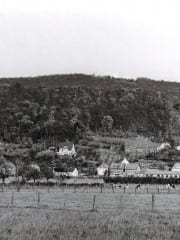


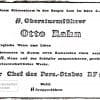
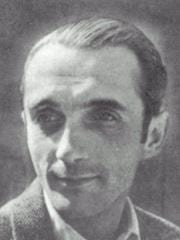
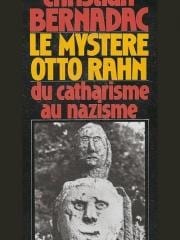


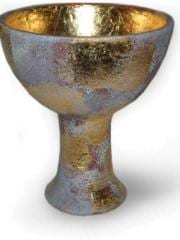
Commenti recenti
13 anni 41 settimane fa
13 anni 42 settimane fa
13 anni 42 settimane fa
13 anni 42 settimane fa
13 anni 45 settimane fa
13 anni 51 settimane fa